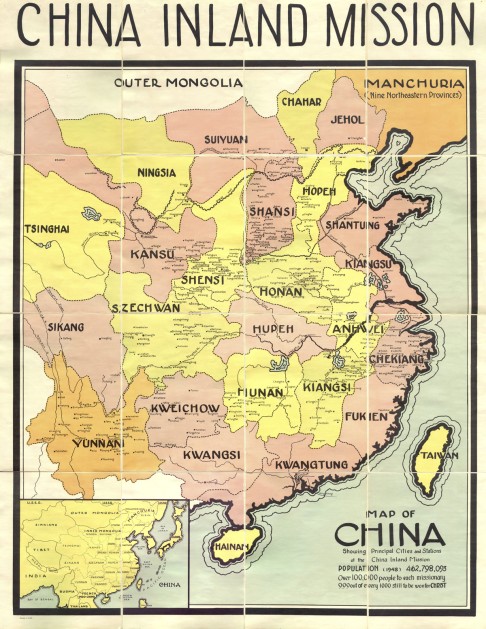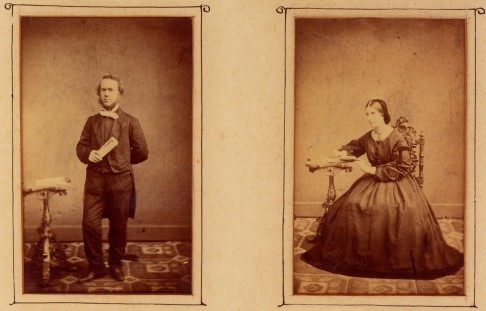
James Hudson Taylor, an English missionary who made his mark in China
Born in a mining town in the north of England, James Hudson Taylor found his calling as a missionary in China. Helen Leavey looks at the long legacy of a Christian pioneer.
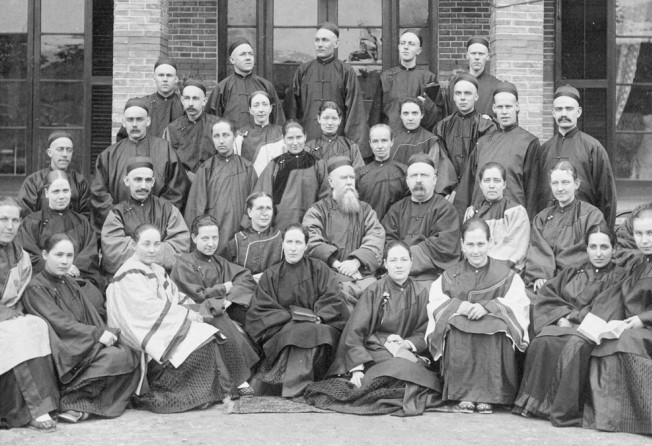
On a chilly, rainy June day in Barnsley, a former mining town in the north of England, about 50 people have gathered in a walnut-panelled room in the town hall, a building that, when it was erected in the 1930s, was criticised by Animal Farm author George Orwell as having cost too much when so many people in the town lived in poverty.
Inside the still imposing building, a mixture of young and old are milling around. Several have travelled a long way to be here: an 82-yearold woman from the United States, a middle-aged couple from Canada and a mother with her 12-yearold son from Taiwan. They nibble sandwiches and crisps, and sip cups of tea while chatting under a large painting of Queen Elizabeth II.
A hush descends as a line of suited, mostly elderly men, stand to welcome the crowd. One is the mayor, a plain-speaking Yorkshireman wearing a heavy gold chain across his shoulders. Another is the bilingual Reverend James Hudson Taylor IV, who has flown in from Hong Kong. A third begins proceedings by addressing the crowd with a “ni hao” and then “‘ey up”, an old-fashioned Yorkshire greeting.
The visitors have come to commemorate the achievements of a Barnsley-born man who left his home and family in the 19th century, aged 21, to travel to China to convert its people to Christianity. James Hudson Taylor would spend several decades in China and introduce hundreds of other missionaries to the country before his death in 1905, in Changsha, Hunan province, at the age of 73. Those who have gathered to remember him include descendants, Christian converts and locals proud that such an inspiring figure came from Barnsley.

The town-hall gathering is being held almost 150 years to the day after Taylor set up the China Inland Mission. It is just one of a series of events to mark the anniversary, many of them overseen by the Reverend Taylor, the missionary’s great-great-grandson, who even gave a religious service in Putonghua in Barnsley’s Salem Wesleyan Reform Church, to a congregation of 90 people, mostly Chinese Christians living in Britain.
“This is a very special time,” says the Reverend Taylor, a father-of-three who grew up in Taiwan. “Barnsley is where our roots are.”
JAMES HUDSON TAYLOR WAS the son of a pharmacist. He was born, in 1832, into a deeply religious household – his father was a lay preacher – but his own Christianity wavered before he declared his commitment to God, and to “saving” the Chinese people, when he was 17. He had received a few years of medical and language training, before setting sail in 1853 from Liverpool, on a five-month voyage to Shanghai.
The Chinese port had opened to foreigners following the first opium war and it was there that the young Yorkshireman first worked as a missionary. There were few such workers in China at the time, and Taylor soon began to stand out.
He attracted criticism and ridicule from other foreigners for wearing Chinese clothes and a queue pigtail, which he did in the belief that locals would be more likely to listen to him if he blended in. Life wasn’t easy.
In an early letter to his family, he wrote, “At home, you can never know what it is to be alone – absolutely alone – amidst thousands, as you can in a Chinese city, without one friend, one companion, and with everyone looking on you with curiosity, with contempt, with suspicion or with dislike. Thus to learn what it is to be despised and rejected by men – of those you wish to benefit, your motives not understood.”
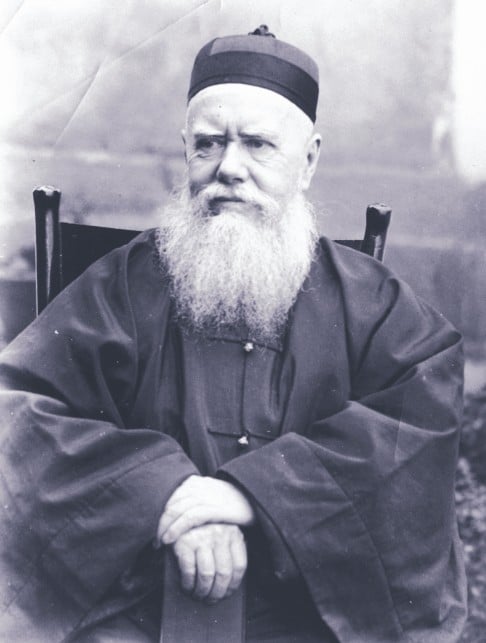
Taylor travelled inland to preach in areas rarely, if ever, visited by foreigners.
His life in China had its highs and lows. He was robbed; married Maria Dyer, the daughter of another missionary; and was almost hit by a cannon ball, which his mother then kept for years. The missile had been apparently fired by the Imperial Army during the Taiping rebellion (1850-64) and, says the Reverend Taylor, his ancestor sent it home as a Christmas present.
Having suffered health problems, Taylor returned to England in 1860 with Maria and their baby daughter. There he drummed up support to “save” more Chinese souls while helping with Bible translations and undergoing more medical training.
It was on a pebble beach in the town of Brighton, on England’s south coast, on June 25, 1865, that Taylor made the decision to establish the China Inland Mission. According to the writings of Alfred James Broomhall, historian of the mission, this is how Taylor explained what he felt at the time: “All at once came the thought, ‘If you are simply obeying the Lord, all the responsibility will rest on Him, not on you!’ What a relief! Well, I cried to God, ‘You shall be responsible for them and for me, too!’” One of the guests in Barnsley 150 years later is Mary Previte, the sprightly 82-yearold great-granddaughter of the missionary. She is living proof that Taylor was an inspiration to his own family as well as to the wider Christian community. Many of his descendants went on to become missionaries in China.
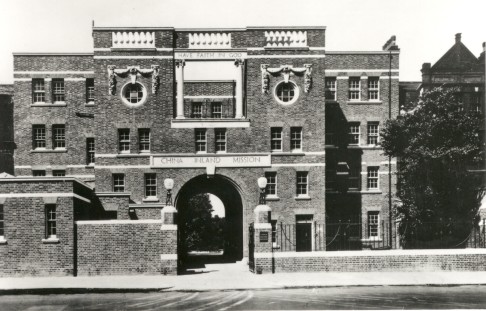
Previte was born and grew up in China. Her parents ran a Bible school in Kaifeng, in Henan province, where her mother would try to persuade the Chinese not to bind the feet of their daughters, a practice that was then outlawed but still widespread.
With several family members, Previte was imprisoned by the Japanese in the Weihsien Internment Camp, in Shandong province, during the second Sino Japanese war and did not see her parents for four years. After being reunited in 1945, the family moved to the United States, where Previte eventually became a Democratic politician. Now retired, she has travelled from her US home to attend the anniversary celebrations.
A HANDFUL OF MISSIONARIES had been recruited and were already working in China by the time Taylor and 17 other adults – including Maria – and four of his children set sail from London in 1866. In Hangzhou, they were offered the premises of an absent missionary to use temporarily. The mission’s headquarters thus became based in the Zhejiang province city.
“[Taylor’s] approach to using female missionaries – both married and unmarried – was far ahead of his time,” says Previte, adding that he was also unique in being committed to taking the Gospel to every part of China, not just the coastal areas.
“That was unheard of at the time. His whole approach was a huge departure from 1800s missionary practice.”
The mission also trained Chinese converts to spread Christianity, urged foreign recruits to wear local dress and deployed foreign missionaries with workingclass backgrounds.
For all his sensitivities, though, Taylor was not afraid to speak his mind.
“Ancestral worship,” he thundered at the Shanghai Missionary Conference of 1890, “is idolatry from beginning to end, the whole of it and everything connected with it.”
Since filial respect was the cornerstone of Chinese faith, that kind of attitude would have caused great offence, especially since he believed that for idolaters, “Their part is in the lake of fire.”
Taylor’s was to become the largest missionary group in China; by 1888 it had 294 missionaries in 14 provinces. But progress was slow, despite missionaries establishing schools and hospitals, as well as churches, to try to interest the Chinese in Jesus.
In An Australian in China, a book about a journey through the west of the country in 1894, George Ernest Morrison wrote of the difficulties experienced by Taylor’s missionaries: “Since its foundation in 1887, the Inland Mission of Wanhsien [now Wanzhou, a district of Chongqing] has been conducted with brave perseverance. There are, unfortunately, no converts, but there are three hopeful ‘inquirers’, whose conversion would be the more speedy the more likely they were to obtain employment afterwards.”
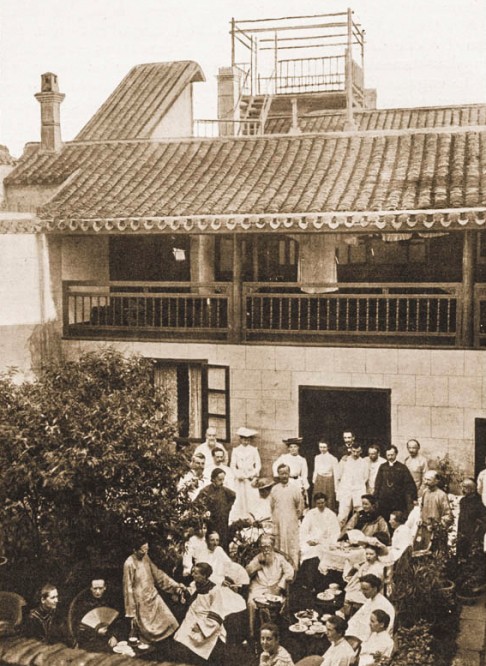
Taylor became a global figure, travelling to recruit missionaries, including in the US and Canada. For the foreigners who joined him, life was stimulating, exciting even, especially when compared to the rigidness of society at home and the comforts enjoyed by missionaries of other organisations.
Of John Smith, in the Tali (Dali, in Yunnan province) station, the furthest inland of the mission’s outposts in the 1890s, Morrison wrote: “He is welcomed everywhere and in every case of serious sickness or opium-poisoning, he is sent for.
“The city magistrate has himself publicly praised the benevolence of this missionary … I saw the courageous man working here almost unknown, and I contrasted him with those other missionaries – the majority – who live in luxurious mission houses in absolute safety in the treaty ports, yet whose courage and self-denial we have accustomed ourselves to praise in England and America, when with humble voices they parade the dangers they undergo and the hardships they endure in preaching … to the ‘perishing heathen in China, God’s lost ones!’” By the start of 1894, wrote Morrison, “the Inland Mission numbers 611 male and female … pioneer Protestant … missionaries. They are assisted by 261 paid native helpers, and the combined body of 872 Evangelists baptised during the year [1893] 821 Chinese. These figures … attest a rather lower rate of progress than the other missions can boast of; but a considerable part of the inland work, it must be remembered, is the most difficult work of all – the preaching of the Gospel for the first time in newly opened districts.”
Eileen Brown, a vicar’s daughter, followed the love of her life, Reginald Bazire, to China in 1926. They had first met at a China Inland Mission conference in England in 1921. Bazire had chosen to be a missionary while Brown was set on a musical career. Initially, they went their separate ways before she applied to be a missionary, too.
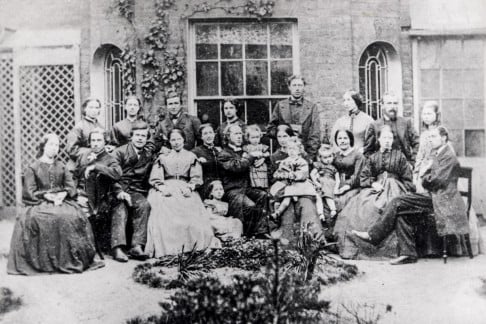
After intensive training in London, where she had to wash laundry and do the dishes for the first time in her life, Brown sailed for China, marrying her sweetheart the following year in Shanghai. The Bazires spent almost 20 years in China and their adventures included being shot at on the Yangtze River and internment in the same camp as Previte and Olympic athlete and missionary Eric Liddell, whose life is depicted in 1981 film Chariots of Fire.
In her unpublished memoirs, shown to me by her son, Peter Bazire, Eileen wrote of how she, Reginald and their two young sons arrived at one particular outpost in the early 1930s to be greeted by an outbreak of typhoid: “People were dying so fast that there was no time to bury them properly. Bodies were put into makeshift coffins and buried in the sand by the river. There was a corpse in our house.”
She believed the disease was spread by contaminated water that was carried in unwashed buckets. “There were no precautions whatever,” she wrote.
Her family stayed on at the outpost and, trusting in God to protect them, survived their years in China.
A FEW DECADES EARLIER, Taylor’s family had not been so lucky.
Several of his children died at birth or in childhood and Maria passed away in Zhenjiang, Jiangsu province, in 1870, soon after giving birth to the couple’s ninth child.
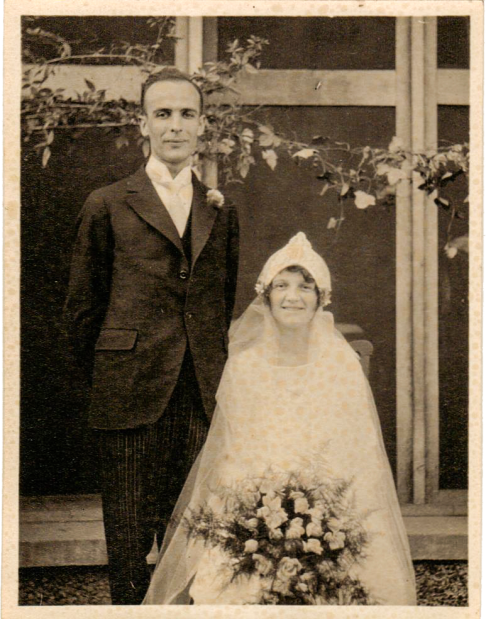
After her death, Taylor returned to England, where he married a friend of Maria, fellow missionary Jennie Faulding, who would eventually bear him two more children.
With his new wife, Taylor headed back to China, where the mission’s most difficult period was yet to come. The anti-imperialist, anti-Christian Boxer rebellion of 1899-1901 saw thousands of “foreign devils” and Christians killed. Beheadings, burnings and torture were rife. Fifty-eight missionaries from Taylor’s group and 21 of their children were murdered. The organisation suffered more deaths than any other missionary group operating in China at the time.
Its founder, abroad when the uprising happened, was devastated, but refused to accept compensation from the Chinese government.
He was determined to show he was in the country to serve the people – not take from them.
Despite the setbacks, the mission – renamed the Overseas Missionary Fellowship in the 1960s and as OMF International in the 90s – continued to grow. At its peak, in 1934, it employed nearly 1,400 missionaries. OMF believes there were about 6,000 missionaries, from all groups, in China by the time the Communists came to power in 1949, and more than a million followers.
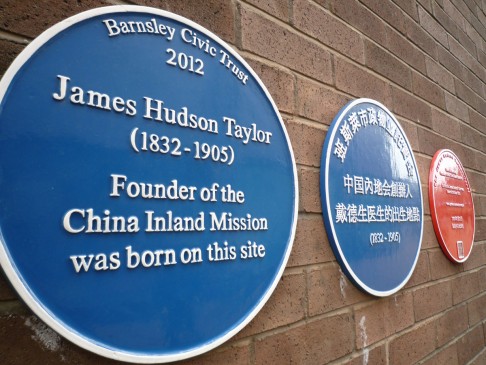
There are now thought to be tens of millions of Christians in China. Many openly practise their religion in state-sanctioned churches while others worship in illegal underground churches.
What would Taylor make of this huge number of worshippers?
“I think he would say that’s wonderful, but let’s not forget the rest of the Chinese people who still need to hear the Gospel,” says the Reverend Taylor.
Christianity might still be expanding in China, with new churches being built and the authorities increasingly nervous about the spread of its ideas, but it is a different story in Britain, where the number of churchgoers is falling.
Shoppers milling around Barnsley’s market just before the 150thanniversary reception in the town hall have not heard the name James Hudson Taylor. “Who’s he? Is he famous?” asks one. Another says she is not good at recognising the names of celebrities – or, it seems, the markers on the James Hudson Taylor trail: 14 plaques dotted around Barnsley signposting places associated with the missionary.
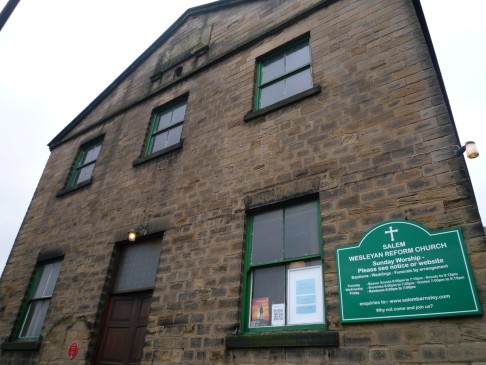
The Salem Wesleyan Reform Church, a protected building erected in 1825, is a key site on the trail. The wooden pulpit at which Taylor stood to preach when he returned to his hometown is beautifully preserved, as are the pews – enough for about 300 people. The organ is in good condition and can still blast out the hymns that Taylor would have sung. However, in some places, plaster is peeling from the walls, and damp and mice are spreading.
With donations, grants and rent for use of the hall “we can maintain running costs, but the structural damage needs about £200,000 [HK$2.4 million]”, says Philip Nuttall, a lay preacher at the church. The congregation will have trouble raising the funds – there are only 13 of them.
Other indicators show how far the church has slipped in the esteem of the public. Some windows are made of plastic because, as Nuttall puts it, “the bricks bounce off better” when inebriated patrons turn out of nearby nightclubs and pubs. On Sunday mornings, the tiny congregation has to pick up discarded food wrappers from the front of the church before beginning the service.
Nuttall, who is also a member of the James Hudson Taylor Group, which promotes the missionary for the benefit of the church and Barnsley, hopes to attract more tourists: “The church is looking for partnerships that will allow us to bid for grants to make … a visitor centre.”
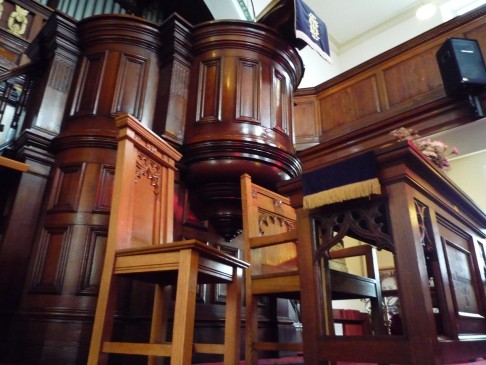
“The 150th anniversary is a good opportunity to raise awareness of James Hudson Taylor,” says Sue Thiedeman, head of culture and visitor economy for Barnsley Council. “He is completely unique and is always included in our promotions.”
She also hopes that a government-led push to promote northern England will reap benefits.
The anniversary is also a chance to reflect on how times have changed for Christianity in China. The Communists threw out all foreign missionaries after coming to power in 1949, blaming them, along with other overseas influences, for causing many of China’s problems. The Reverend Taylor, who works for OMF International’s China section, says the pendulum has swung back recently “to a more balanced view of what missionaries did in China”, although, he admits, some of them did make mistakes.
“We were very closely linked to colonialism and some of the early missionaries were recruited to be interpreters for their own countries,” he says. “It was hard for the Chinese to differentiate between missionaries and people who were tools of their government.”
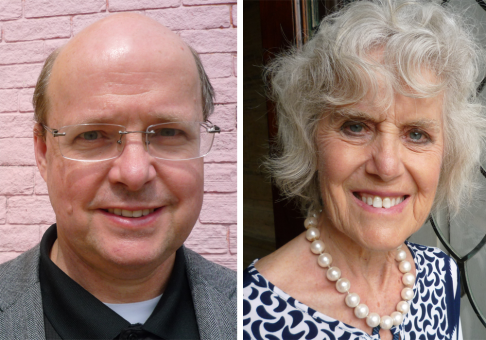
The Reverend Taylor adds that some missionaries went to China with a “degree of ethnic superiority”.
After Taylor’s missionaries were expelled from China, they moved to Asian countries that had large Chinese populations, ministering first to the Chinese and then local populations.
OMF International, which now has its first Asian leader, Patrick Fung, currently has more than 1,400 missionaries in East Asia and with East Asians elsewhere. Although it still cannot proselytise in China, the organisation does send other kinds of workers – English teachers, dentists, business managers and nurses – to the country, where they are expected to spread the Gospel.
“People are not allowed to go as missionaries to China, but there are many opportunities for Christians to go and serve the people there and allow the love of God to flow into their lives,” says the Reverend Taylor.
The Victorian James Hudson Taylor might be little known in Barnsley, nowadays, but the mission he started 150 years ago continues to inspire Christians thousands of miles from his hometown.
